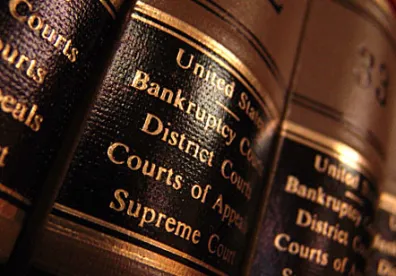San Bernardino’s Chapter 9 case is back in the news. On May 18, the City Council approved the City’s proposed exit plan for filing with the Bankruptcy Court in a 6 to 1 vote. San Bernardino’s plan is challenging to say the least and certainly consistent with Judge Jury’s January comment that “sometimes you have to get ugly to get pretty.” The plan reflects the City’s “Gordian Knot” of financial obligations to bondholders, employees and retirees, and the City’s need to deliver essential services to residents without raising taxes beyond the breaking point. The City is facing truly intractable challenges; it is the poorest city of its size in the state and it has few assets to work with. That’s why the initial plan is disappointing and looks like an opportunity missed. The report provided to the City Council regarding the plan can be found here.
The Proposed Plan of Adjustment
Under the plan, the City proposes to pay pension bondholders a penny on the dollar on its $50 million in outstanding pension obligation bonds, while assuming its retirement obligations without impairment. This means pensions are to be paid at 100%. Running what could be called a “Stockton strategy”, the City is proposing to eliminate retiree medical benefits. It’s a Stockton strategy because we can expect to see the City argue that employees and retirees have given enough through changes in pay and medical benefits and that those changes support the proposed 100% payment on pensions. This is the “pain threshold test” fashioned by Judge Klein in Stockton’s Chapter 9 case.
The pain threshold test, which flies in the face of fair and equitable treatment of similarly situated creditors in bankruptcy, doesn’t go very far when bondholders are receiving a proposed 1% recovery. Bondholder pain threshold in this case is extreme and it is mind boggling that the City didn’t propose even a reduced payment plan over time. Instead the City is seeking to escape what is the practical equivalent of the entire obligation.
Of course, we can expect the bondholders to strenuously object to their proposed treatment asserting that they are not receiving fair and equitable treatment. In this circumstance, pension claims and pension obligation bonds are both general unsecured obligations. The swing between 1% and 100% leaves a lot of room for argument that the treatment is neither fair nor equitable. We can also expect to see the bondholders argue that the plan was not filed in good faith if, for no other reason, the disparate treatment between bondholders and pension holders. One can only hope that the plan is the City’s opening gambit with serious negotiation to follow. If not, we can expect to see a protracted confirmation fight.
Dismissal of Bondholder Adversary Proceeding
To add insult to injury, prior to the release of San Bernardino’s plan to the City Council, Judge Jury dismissed the bondholders’ adversary proceeding seeking pari passu treatment (identical treatment) of their bond claims with the pension claims. The Court found that when the bonds were issued it changed the legal nature of the City’s obligations and provided bondholders with different rights and remedies. Stated another way, despite the fact that the bond proceeds were used to reduce pension obligations making them the functional equivalent of pension obligations, the changes to the legal rights and remedies prevent pari passu treatment. This is the right decision but disappointing nonetheless.
The Court was sympathetic to the bondholders while dismissing the lawsuit, going out of her way to state the Court would scrutinize bondholder treatment in the plan carefully. That won’t take long.
San Bernardino is Now “Ground Zero” For Preferring Pensions over Bonds
In trying to cut through the “Gordian Knot” of its battered finances, San Bernardino has proposed, in addition to eliminating retiree health benefits, to outsource fire, emergency services and trash. The City also intends to raise utilities and other fees and appears to be wholly unable to address deteriorating roads and a shrinking police force.
One has to ask what is going to be left if San Bernardino’s proposed bankruptcy plan is confirmed by the Bankruptcy Court. The City’s main purpose, it would appear from the plan, is to maintain its existence in order to pay pensions and maintain a sharply reduced police force. The Gordian Knot is not gone, just reduced by $50 million. With CalPERS’ proposed future increases in annual pension contributions and San Bernardino’s stressed tax base, confirmation of a plan that assumes 100% of pension obligations raises the serious question of whether the plan is feasible at all.
Instead of restructuring its largest liability, San Bernardino has created a situation where the City’s financial future remains very much in question. It is not enough to virtually eliminate financial obligations to bondholders, contract out services, and exit with backbreaking pension obligations. The City asserts that maintaining pensions is necessary to keep and hire new employees. The proposed outsourcing calls this rationale into question.
Chapter 9 exists to provide cities the opportunity to restructure and exit bankruptcy on a sound financial footing. Its purpose isn’t to shrink or eliminate a few of the “Gordian Knots”. The remaining pension knot in this case potentially jeopardizes San Bernardino’s ability to deliver essential health, safety and welfare services in the future. Chapter 9 is intended to be the knife that cuts the Gordian Knot of municipal finances by fairly and equitably treating similarly situated creditors. To the extent this plan moves forward, it won’t be difficult to find unfair, inequitable and disparate treatment. The real question to be answered is just how far can a plan of adjustment go to prefer pension holders over bondholders?
As I have written in many blogs and articles, no one wants to reduce employee wages, benefits or pensions. No one wants to not pay bondholders. We have to find a way to restructure municipal obligations that is fair and equitable to bondholders and pension holders and allows cities to restructure with sufficient breathing room to deliver essential services to residents. There are many stakeholders at a municipal restructuring table. They include the city, its taxpayers and residents, employees, retirees and creditors, including bondholders. A city’s relationship with each of these entities is deep and complex. The relationship among the entities is challenging because each entity has different wants, needs, and goals. There is no common definition of success.
The more cases where pensions receive significantly better treatment than bondholders, the more negative the impact on the municipal market. San Bernardino may have placed itself in a league of its own, potentially unable to access the market because there is no price differential that balances the risk of total and complete non-payment.
San Bernardino is the “shot heard around the country” as its proposed plan, if confirmed, will be the harbinger of what is to come. That is, municipalities using Chapter 9 as a tool for restructuring everything but pensions. It’s a good bet Illinois will become the test kitchen for this Chapter 9 strategy, although Chicago’s focus may be on restructuring pensions as well given the City’s dire straits. Stay tuned, the battle for “fair and equitable” is far from over, from any party’s perspective.




 />i
/>i
